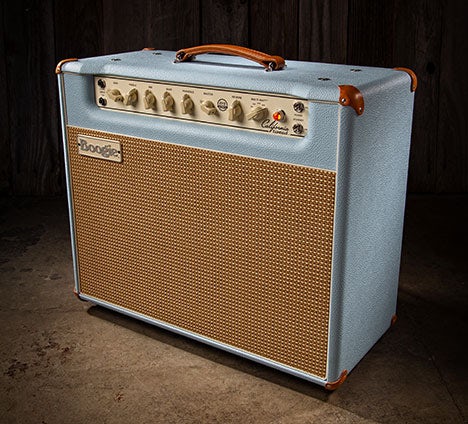Amplitudes: The Mesa Boogie Blog
Tones And Tips
6L6 vs. EL-34 ~ FEEL the power ~ of your amp's power section
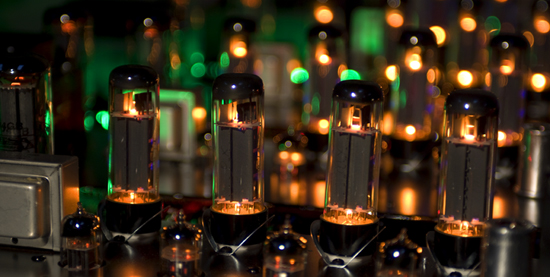
On the subject of tube amplification, you’ll often find discussions of one tube type being better than another. Guitar players are quick to defend the how-and-why of their preferences and the type of tube used is a common jumping-off point for what makes an amp great.
While there is certainly some truth to the idea that different tubes offer different flavors of tone, in Mesa’s humble opinion, the power tubes are largely ‘in service’ to the preamp circuit design; the circuit is essentially the cake and the output tubes are the icing. Like most things, there’s a long and short story, and the audible differences between the tubes oddly ends up being the short story. The long story may well provide you with some new insights as to how to approach tube tone and regardless of your tube preference, you may find yourself appreciating both for their inherent specialties.
It’s ironic that MESA has long been thought of as a company specializing in preamp sounds (not accidentally - since the all-tube, cascading high-gain preamp originated here). But it has always been our view that an amplifier’s magic comes from the perfect harmony between preamp and the power section. The many patents we hold covering all aspects of the power amp – from Channel Assignable Wattage, Switchable Rectifiers, Switchable Classes of Operation and even Wiring Styles hints at our inclusion of the power amp as a huge part of the tonal greater good. The power tubes’ type and role is indeed an important one, but it’s only part of a larger picture.
These days, the subtleties of power-tube distortion and clip are often overshadowed by the greatly expanded range of preamp gain available in modern amp designs. Most modern distortion circuits and sounds are usually generated by massive preamp gain being amplified through very clean power sections that are operating below their power rating (threshold of clip). This translates into less potential for power section/tube qualities to be a major part of the sonic style – even with Master and Output levels turned way up. Extremes of distortion and harmonic layering from the preamp are amplified with articulate detail through this cleaner power section. For Rectifier high gain sounds (and Roadking & Roadster), especially when using the amp for its original intended purpose (massive gain sounds in Orange and Red channels), switching between 6L6s and EL-34s may produce only slight differences, if any. Power tube influence can be masked at lower playing volumes with high preamp GAIN settings.
How about those differences?
While 6L6 and EL-34 power tubes are more likely to surprise you with their similarities in an A/B situation, you're actually more likely to FEEL the differences between them. Audible differences do exist though and for those of you looking for the quick answer to the title of the post, these next two paragraphs are for you.
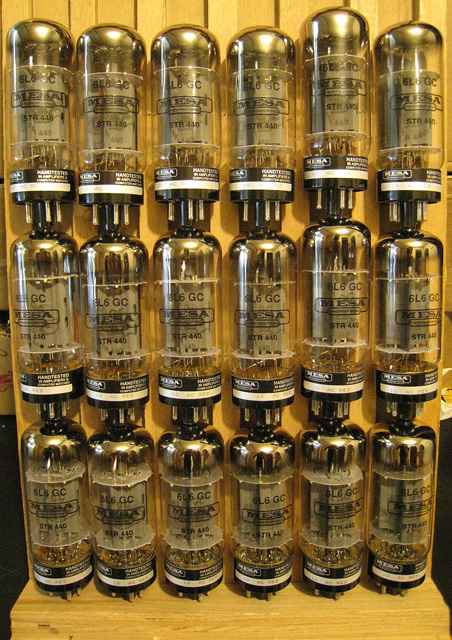
Sonically speaking, 6L6s are well-known for being versatile and balanced across their entire range of low, mid and high frequencies. They are often loosely referred to as being 'fat and round' with a musically blooming bass response but they are also well regarded for being brilliant, detailed, sparkling and 'open' in high-end and presence frequency ranges. With the 6L6 being so well balanced yet bass-full and high-end brilliant, you might be thinking to yourself that the 6L6 has everything anyone could ever want from a tube... and Mesa's history tends to agree. The 6L6 is easily the most versatile tube for any styles from pristine clean for jazz to mind-numbing metal and anything in between. The same headroom that delivers full range clean tones simultaneously offers the same clarity to support huge but accurate low-end with modern high gain applications. Versatility being one of the cornerstones of Mesa products, the vast majority of Mesa amps have either been designed specifically with 6L6s only, or, those amps with the Switchable Bias are originally shipped with 6L6s from the factory. Beyond its expansive sonic signature, 6L6 tubes are consistent, reliable and a mainstay for tube guitar amplifiers since the inception of guitar amplification.
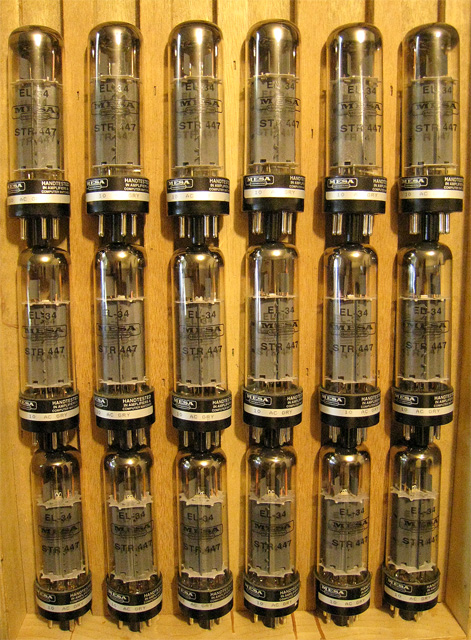
Threshold of distortion, clip and overdrive.
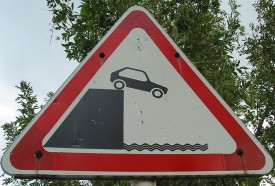
One of the important and likely more noticeable differences players will experience when properly comparing 6L6s and EL-34s is threshold of clip and distortion. This living, breathing aspect of tube tone might not be as obvious to players new to tube amplification and/or those who haven’t been able play their amp very loud or at gig levels yet. So... let's start by defining some of the concepts in the title above.
"Threshold of distortion" – as it relates power amp sections – is the point where the Output and/or Master settings of the amp, with settings dialed for clean sounds in the preamp, is being turned up loud enough to begin saturating the power section and power tubes, generating distortion. Clip is a term that describes the subtle initial onset of this distortion and the transition from clean sound to distorted sound. Overdrive is a term generally used to describe distortion sounds beyond this soft clip – but before full gain saturation and layering we all call distortion. Overdrive is often the term used to describe distortion that is smoother and warmer and better for single-note solo tones or purring rhythm sounds. Hopefully these descriptions shed light on some of the more obscure details behind great distortion tones. Now, let's compare our two tube competitors in the arena of feel.
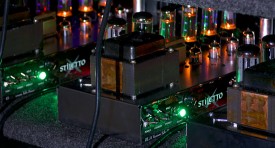
Technically speaking, EL-34s are served higher voltages and utilize more current than their 6L6 counterparts. Non-technically, they run hotter! This hotter/higher current operation is one of the reasons why EL-34 tubes (and the amps that use them) offer such a wide range of overdrive and crunch sounds from their power sections. The allure of EL-34s, particularly for gain sounds, stems from the tube's earlier threshold to clip and distort when pushed. As you increase the amp's overall volume, the potential and usable range for EL-34 power tubes to break up musically increases in a big way. This is the land where great, gut-punch gain sounds are born (think early AC/DC or vintage Van Halen). These fabled early rock distortion sounds were generated by power sections of amps being cranked up, since all-tube cascading preamp gain as we know it today was JUST being born by Mesa's designer and high-gain preamp pioneer and innovator, Randall Smith.
6L6s offer a noticeably different range of distortion threshold and clip potential once you know 'where' to listen. The rich, full range of bass frequencies highlighted in 6L6s can generate a wide sonic footprint when pushed, but too much power section clip with a 6L6 can cause bass "bloom" that expands beyond a desirable sound. With smoother mids and low-treble frequencies compared to the EL-34, 6L6s also produce less obvious saturation when pushed. Power tube distortion and overdrive with 6L6s tends to be warmer, smoother and sweeter overall and is more commonly used in traditional blues and roots styles or wherever low to medium gain clip or pushed clean sounds are what the music calls for. For those looking to exploit the 6L6 clip threshold, single notes and solos can take on almost unlimited personalities. Solo tones from the likes of Andy Timmons, Robben Ford, or classic Steely Dan solos are great examples of the wide array of clipped and pushed clean sounds available from 6L6s while high gain sounds from the likes of John Petrucci and Dream Theater, Lamb Of God and Metallica are just a few excellent examples of 6L6s in action on the heavy rock front.
Switchable Bias
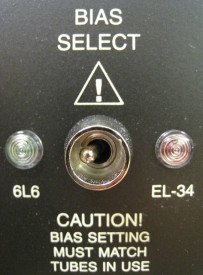
The Switchable Bias feature in Mesa amps allows the user to choose between 6L6 or EL-34 power tubes with just the flip of a switch (and once the corresponding tubes are installed). If your Mesa amp has this option and you are considering venturing into experimental mode, there are a few important things you should know. The first and most important rule to follow is; BIAS SETTING MUST MATCH TUBES IN USE! The reason this sentence is capitalized here and on the back of your amp where the switch exists is because premature tube and/or amp failure can occur QUICKLY if this switch is not set properly. In other words, ALWAYS make sure to set the Bias Select switch to the position that matches the kind of power tubes installed in the amp. Your amp will have been shipped from the factory with 6L6s and the switch set to the same. If you’re wondering what might happen if you switch the bias to EL-34s with 6L6s in the amp, DON’T DO IT! As mentioned before, EL-34s run 'hotter' than 6L6s and if you set the bias switch to ’34s but you have 6L6s installed in the amp, your tubes (and possibly internal components) are going to get cooked. On the other hand, if you set the Bias Select to 6L6s with EL-34s installed, EL-34s will be drastically underpowered and the amp will sound, well... underpowered and thin. Bottom line – MAKE SURE you have the bias switch set to match the tubes you have in your amp and make no exceptions.
Which tube is for me? How to REALLY hear the differences? CRANK IT UP!
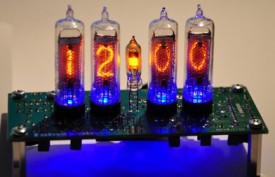
Players using medium gain amp circuits and moderate to low GAIN settings and higher MASTER settings are more likely to hear the variation between these two power tubes as well as being able to take advantage of the musical expressiveness that the threshold of distortion provides. Our new Electra Dyne offers an excellent range of transitional soft-clip sounds and is a great example of an amp that ships with 6L6s but can truly deliver EL-34 greatness across the gain spectrum once installed. On the flip side, the Lone Star – a veritable library of American clean, clipped, and classic overdrive tones – can be ‘tightened and brightened’ and nicely ‘crunch enhanced' with the addition of EL-34s, not to mention what '34s can do in a 10 watt setting on the amp. For the new Mark V, Channels 1 & 2 are loaded with an amazing variety of clean, pushed and crunch tones that will stand up and 'sing 'n' sting' with EL-34s installed while channel 3 can also deliver great variations from EL-34s in medium GAIN settings. For Rectifier, Roadster, Rectoverb and Solo50 owners considering switching to 'EL-34s, try this; Raw or Vintage on the gain channels or Brit and Pushed in the clean modes, switch Rectifier Select to Vacuum Tubes, drop it to 50 watts and turn it up! Explore the mighty hand of power tube distortion.
So which tube is for you? Well... what kind of music do you play? If you play classic rock from the ’60s and ’70s, there’s a good argument for you to look into EL-34s. If you play traditional Blues or maybe Jazz - or - mostly clean sounds and just a little bit of overdrive for solos, 6L6s are probably the best place to start. Modern rock? Probably 6L6s – BUT – like we said at the beginning, power tubes don’t make the amp, the circuit and the big picture does. Research is key and if you have questions, give Mesa Customer Service a call. We’re specialists in the details but also great at getting you pointed in the right direction if all the tube talk here didn't set you sailing in the right direction.
Finally, besides tonal differences and feel, the elusive threshold of distortion is a subtlety that is felt more than heard. Many of the details we’ve discussed will likely remain undetectable to any of your senses, regardless of the tube, until your amp can be turned up to 'threshold levels' and gig volumes. For those of you who aren’t in a position to turn your amp up past bedroom volumes, you owe it to yourself to find a way (and the place) to crank your amp up and jam for a while to FEEL what we’ve just covered in this post. Mesa amps sound great at lower volumes but every amp is tested and designed more specifically for use in professional applications. This is where the magic of tubes and Mesa amps REALLY happens. Find a barn, rent a rehearsal room, book a gig or do whatever you have to do to experience power-tube influence over your preamp settings. Ditch the high gain (settings) from the preamp and FEEL THE POWER section in all its glory. We can assure you that you might not be the same guitar player afterward. ;)


